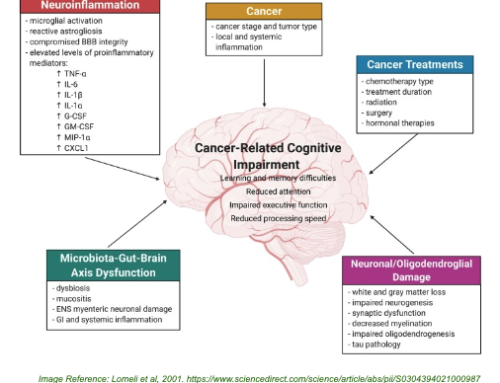The question of providing healthcare and delivering services in rural and remote areas of Australia has always been a challenging one. Our country is vast and population density is comparatively small.
Those who live remotely are often isolated and hours away from their nearest hospital. In such areas, there have long been issues with recruitment and retention of healthcare practitioners, poor economies of scale and escalating healthcare costs. Those in rural and remote areas of Australia experience poorer health outcomes when compared to those living in more urban regions.
Telehealth offers the potential to bridge the gap and rapidly and effectively improve access to healthcare services for people living in rural and remote regions in Australia.
In the literature, there is growing evidence supporting the use of telehealth in remote and rural environments. Bradford et al reference the many outcome improvements of telehealth, including: “showing reduced length of stay; reduced demand on emergency services; improved access to health care; improved quality of services; improved clinical outcomes; decreased costs; reduced inconvenience; improved management of chronic and complex conditions; and provision of peer support, networking and education.”
Improving Health Outcomes
In the Northern Territory, uptake of telehealth has traditionally been limited for a range of reasons, including poor access to broadband internet. A multiple organisation collaboration obtained funding from the Regional Economic Infrastructure Fund to provide access to reliable broadband for three very remote Aboriginal communities. The cost of the internet was very high: over $45,000 per site for infrastructure and $12,000 per month for the three sites connectivity.
Each of the three communities had populations of approximately 100 and access to the nearest major centre took 3-4 hours via non-sealed roads, depending on conditions. With such remote communities, reliable internet and video conferencing as a part of telehealth services proved to be an absolute game changer.
Previously non-scheduled and emergency consultations took place via phone (voice) call. Additionally, patients with specialist appointments had to physically travel to the nearest major centre, or Darwin. All of these appointments could now take place via video-conferencing and allowed physicians and specialists to show patients and their family’s pictures from the internet to demonstrate diagnosis and treatment. Diagnosis could be aided by mobile phone optics which provided video quality good enough for assessment.
Telehealth in these communities has led to an observed reduction in the trauma associated with travel. Indigenous people practice group decision-making and so with telehealth, key family members were able to be present for diagnosis and the ensuing conversations. This was previously a barrier that could delay treatment, even in emergency situations, in Aboriginal communities. Family members may live spread over vast distances and when patients had to travel to see doctors or specialists, they would need to travel back and inform key family members of options for treatment before it could commence. Telehealth removed that barrier, allowing quicker decision-making and treatment administration.
Additionally, video conferencing allowed for more accurate assessments for medical evacuations of patients, access to a wider range of specialists and improved management of difficult chronic conditions.
Cost Saving Opportunity
While the previous NT example appeared to be an expensive venture, in practice, telehealth tends to provide an opportunity for cost saving. Consider the reduced burden on the medical system via the improved health outcomes mentioned above (less demand on emergency services and less time in hospital for example).
Additionally, improved access would likely result in earlier diagnosis and better management of disease and dysfunction, which again reduces the financial burden on the medical system. Similarly, telehealth reduces travel costs for both patients and healthcare workers, which for patients would also equal reduced disruptions to work/employment to seek medical care.
A Lions Eye Institute report estimated that by utilising telehealth Western Australia could save up to $270,000 annually in patient transfer costs to the city, as well as being able to treat 786 rural clinic patients each year, saving $83 per patient. The use of telehealth would also create additional capacity for specialists to perform more surgeries when visiting rural and remote areas and would reduce wait times for both urgent and routine referrals.
Telehealth is also proven to be the more cost-effective option when compared to fly-in-fly-out (FIFO) models, with Cottrell et al finding that the telehealth model provided a cost-saving of 13% compared to FIFO. In fact, the Royal Flying Doctors have embraced telehealth, performing 88,188 telehealth appointments in 2017/18.
Challenges
Despite all the benefits of telehealth, we still see challenges. As mentioned in the NT example, access to reliable internet is a common challenge for rural and remote communities. According to the Royal Flying Doctor Service of Australia CEO Dr Martin Laverty while there is broadband in the bush, the service doesn’t serve all areas. “Even satellite connections to the NBN are not yet reliable enough for our clinicians to have confidence in supervising patients or supervising other clinicians in the field from a base location”.
He went on, “if the pipe doesn’t deliver broadband into remote areas, the devices aren’t going to work. The promise of recent times, for high-speed broadband into the bush is not yet clinically-grade reliable. And until this happens, we’re going to be held back in our next investment.”
Internet access is not the only challenge for telehealth, with not all patients or clinicians prepared to give telehealth a go, preferring the traditional face-to-face model of healthcare. Layer poor internet and a lack of offline solutions onto this scepticism and we can start to see some of the reasons for slower than expected uptake of telehealth in rural and remote Australia.
Despite these challenges, the potential benefits of telehealth are vast and could change the landscape of healthcare for those in rural and remote communities in Australia.



